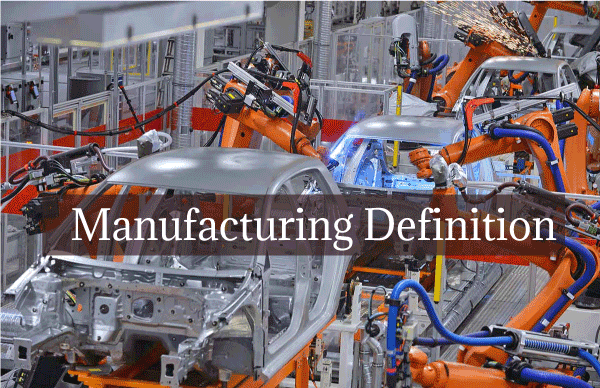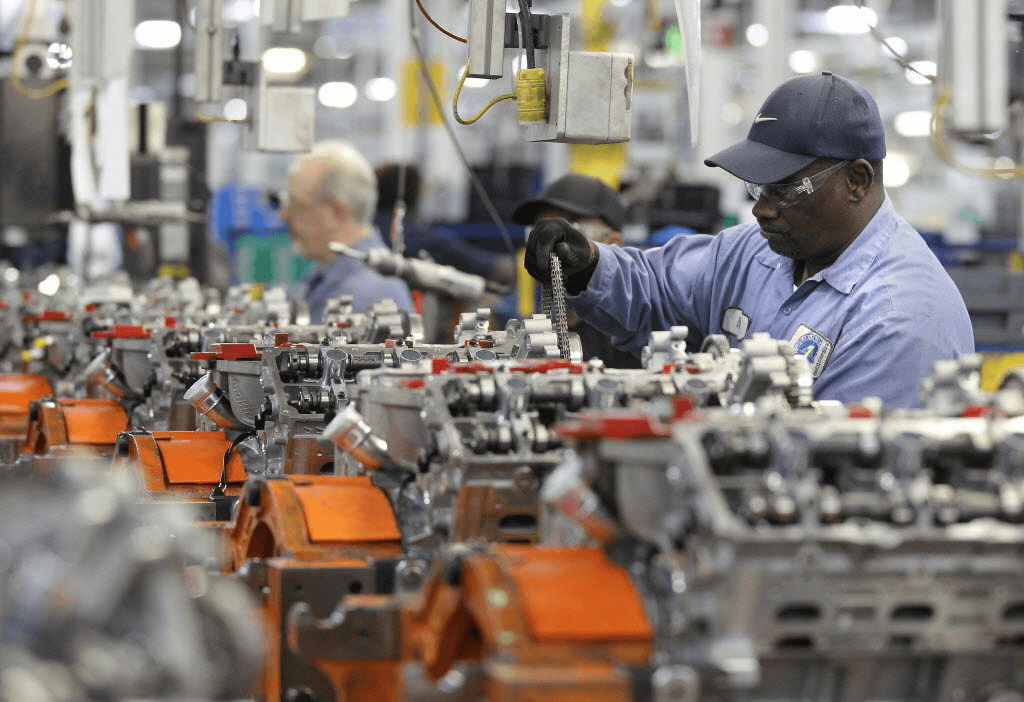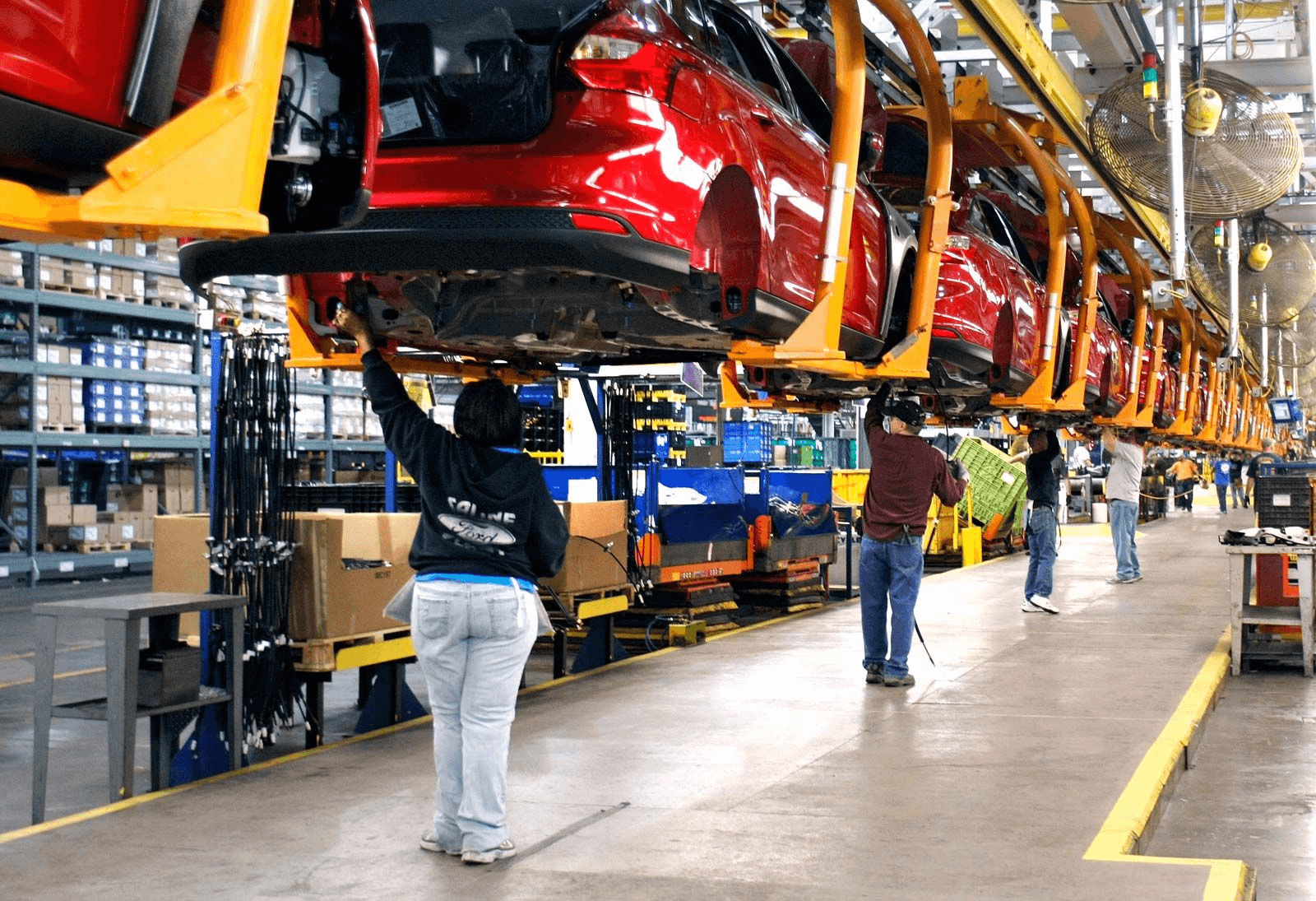Manufacturing DefinitionIntroductionManufacturing is making items, either on a large scale or a small scale, through a combination of raw materials, components, and parts. It is the primary sector of the economy, and it is responsible for the production of goods consumed by society. Manufacturing can be divided into two main categories: heavy and light. Heavy manufacturing involves the large-scale production of goods such as cars, airplanes, ships, and other large consumer goods. Light manufacturing typically involves smaller-scale production of goods such as consumer electronics, clothing, and food. 
HistoryManufacturing has been an integral part of human civilization since the dawn of civilization. The earliest evidence of manufacturing dates back to Mesopotamia in 6000 BC, where clay tablets were used to record the production of goods. Over the centuries, manufacturing has evolved and become increasingly sophisticated by introducing new technologies, materials, and processes. In the industrial revolution of the 19th century, the invention of the steam engine revolutionized manufacturing, allowing for the mass production of goods. In the 20th century, automation and computer technology further revolutionized the industry, allowing for more efficient production. Today, manufacturing is a highly advanced and globalized industry, with goods being produced in all parts of the world. ProcessesManufacturing involves various processes, including design, materials selection, production planning, fabrication, assembly, and testing. The design process involves creating a detailed plan for the product, including specifications, materials, and processes. Materials selection involves selecting the right materials for the product, such as metals, plastics, and composites. Production planning involves determining the best way to produce the product, such as the number of parts, the number of machines, and the sequence of assembly. Fabrication involves making the parts and components of the product, such as cutting, shaping, and welding. Assembly involves putting the parts and components together to create the product. Testing involves ensuring that the product meets the desired specifications. Processes refer to the activities involved in manufacturing a product. The design process involves creating a product concept and turning it into a physical product. The assembly process involves putting together the components to create the finished product. The testing process involves ensuring the product meets all quality standards. The packaging process involves preparing the product for shipment. And the shipping process involves delivering the product to its destination. EquipmentManufacturing requires a variety of equipment and machinery, depending on the type of product being produced. For heavy manufacturing, large-scale equipment is used, such as large presses, lathes, and milling machines. Smaller-scale equipment, such as CNC machines and 3D printers, is used for light manufacturing. Additionally, specialized equipment is used for specific processes, such as injection molding machines for plastic products and laser cutters for metal products. MaterialsManufacturing requires a variety of materials, depending on the type of product being produced. Materials such as steel, aluminum, and brass are commonly used for heavy manufacturing. Materials such as plastics, composites, and polymers are commonly used for light manufacturing. Additionally, specialized materials are used for specific processes, such as silicone for injection molding and carbon fiber for composite products. IndustryThe manufacturing industry is a large and diverse sector of the global economy. It is comprised of a variety of industries, such as automotive, aerospace, and electronics. The automotive industry is one of the largest manufacturing sectors, producing many vehicles, from cars to buses. The aerospace industry produces a variety of aircraft, from airplanes to helicopters. The electronics industry produces various products, from computers to cell phones. The manufacturing industry is also responsible for a large portion of global economic output, accounting for 16% of global GDP in 2020. SafetyManufacturing is a hazardous industry, and safety is of paramount importance. Safety procedures must always be followed, and all personnel must be properly trained and equipped with the appropriate safety gear. Additionally, manufacturing facilities must be well-maintained and compliant with safety standards. What is Manufacturing?Manufacturing is a process by which raw materials are converted into products or goods. It involves using machines, tools, and labor to produce products that satisfy customers' needs. The manufacturing process results in a finished product ready to be sold to the public. It is an integral part of a successful business and is responsible for turning raw materials into customer goods. In this article, we will explore what manufacturing is, the various manufacturing processes, and the benefits of manufacturing. Manufacturing is an essential part of the economy and plays a major role in creating jobs and generating wealth. Manufactured goods can range from simple items like clothes and furniture to complex items such as computers and aircraft. Without manufacturing, many of the products we use daily would not exist. 
Types of Manufacturing ProcessesThere are several different types of manufacturing processes. The most common are: 1. Batch Manufacturing: Batch manufacturing is a process in which a certain number of identical products are made simultaneously. This process is used for products that require many components or parts to be assembled, such as cars or electronics. 2. Mass Production: Mass production is a method of production where large quantities of goods are produced quickly and efficiently using assembly line techniques. It involves using automated machines, specialized labor, and efficient processes to produce goods in large numbers at a much lower cost than manual production. This method produces many products, from cars to food items. 
3. Continuous Manufacturing: Continuous manufacturing is an integrated process where a product is produced uninterruptedly, allowing for more efficient production and improved product quality. This manufacturing method enables the production of multiple products simultaneously with minimal waste and reduced cost. 4. Lean Manufacturing: Lean manufacturing is an approach designed to reduce waste and increase efficiency in the production process, focusing on eliminating non-value-adding activities and providing customers with products on demand. Benefits of ManufacturingManufacturing has several benefits for businesses and consumers alike. It creates jobs, boosts the economy, and provides various products for people to purchase. Manufacturing also helps businesses reduce their costs by reducing the number of raw materials needed for production and utilizing the most efficient production methods. Additionally, manufacturing helps businesses to stay competitive by providing them with the ability to produce products quickly and efficiently. Manufacturing also helps to increase the quality of products. By utilizing the latest technology and techniques, businesses can produce products with fewer defects and higher levels of quality. This helps to ensure that customers receive the best possible products. Modern ManufacturingToday, manufacturing is a complex and highly automated process used to produce a wide range of goods. The manufacturing process begins with selecting raw materials, which are combined in various ways to create a finished product. This process often involves using machines, computers, and other technology to create the desired item. Furthermore, modern manufacturing often involves various processes, such as assembly, fabrication, and machining. InputsInputs refer to the materials and components used in the manufacturing process. Raw materials are the natural resources used to create products, such as wood, metal, and plastic. Components are the parts used to assemble the finished product, such as screws and bolts. These inputs are sourced from suppliers and are used to create the finished product. OutputsOutputs refer to the finished products that are created by the manufacturing process. These products range from simple items such as clothing and furniture to complex items such as computers and airplanes. The output of the manufacturing process is typically sold to consumers, businesses, or government entities. Environmental ImpactManufacturing processes have a significant impact on the environment. Heavy manufacturing processes can create large amounts of air and water pollution and generate hazardous waste. Light manufacturing processes can also generate hazardous waste at a significantly lower rate. Manufacturing processes also require a large amount of energy, which can lead to increased greenhouse gas emissions. ConclusionManufacturing is a critical component of the global economy, and it is responsible for the production of the goods that we use in our everyday lives. It is a complex and highly advanced industry with various processes, equipment, materials, and industries. By understanding the history, processes, equipment, materials, and industry of manufacturing, we can better appreciate the importance of this sector of the economy. Manufacturing is a vital part of the economy and is responsible for creating jobs, boosting the economy, and providing various products for people to purchase. There are several manufacturing processes, each with its benefits and drawbacks. Ultimately, the benefits of manufacturing far outweigh the drawbacks, making it an essential part of the economy.
Next TopicMarriage Definition
|
 For Videos Join Our Youtube Channel: Join Now
For Videos Join Our Youtube Channel: Join Now
Feedback
- Send your Feedback to [email protected]
Help Others, Please Share










